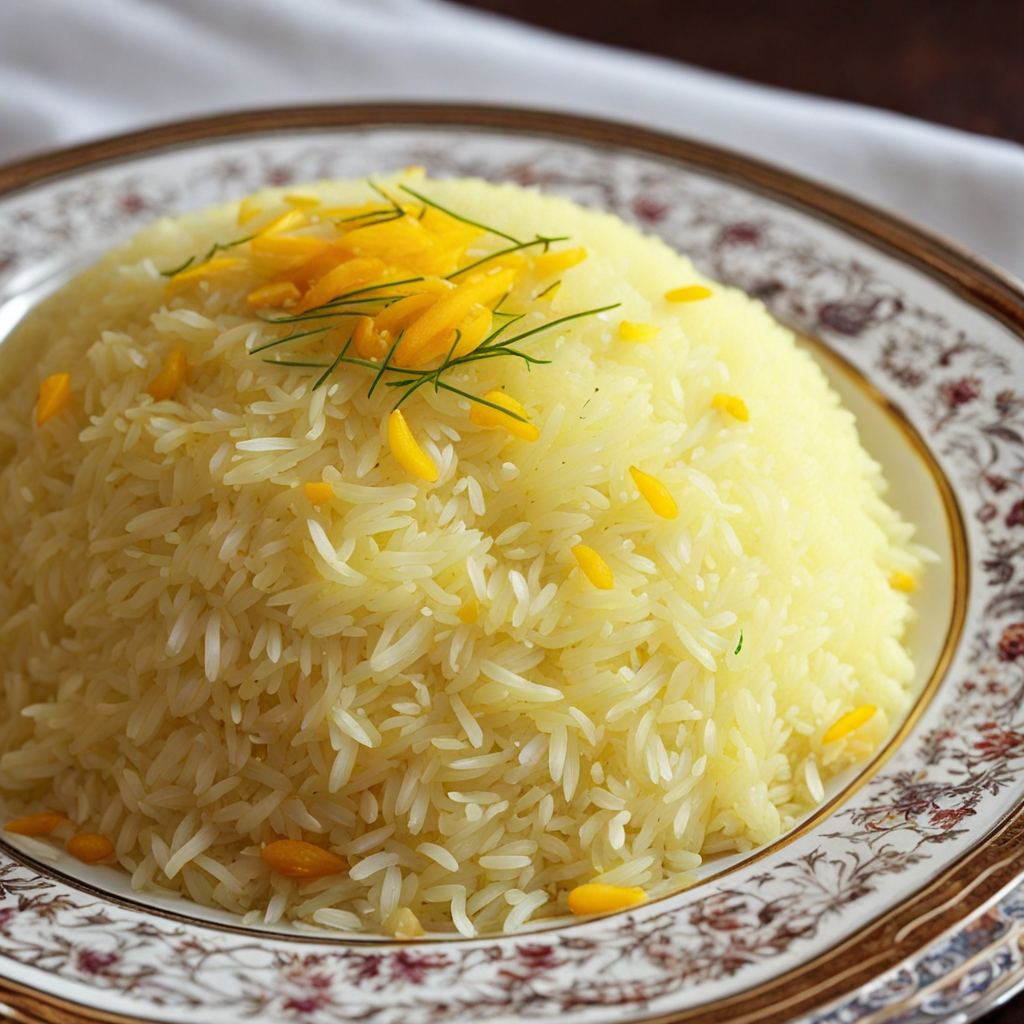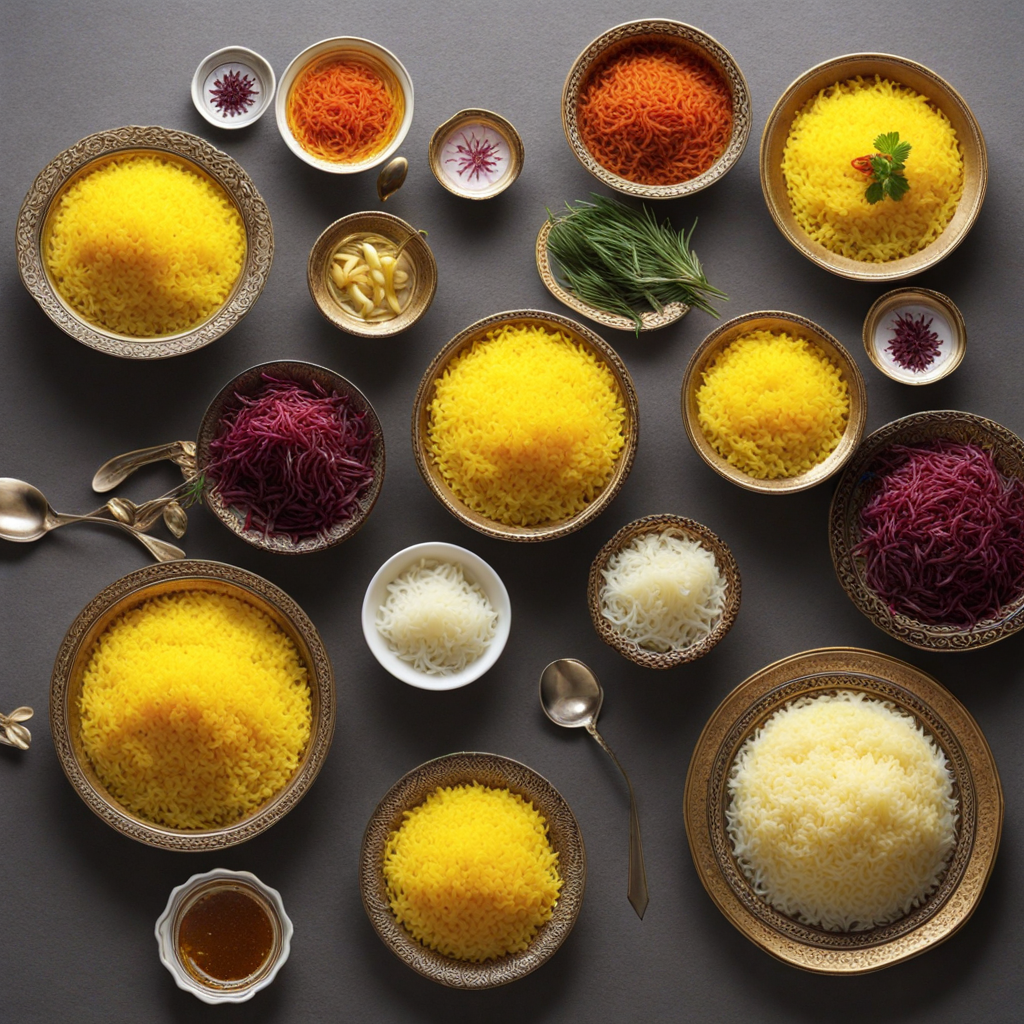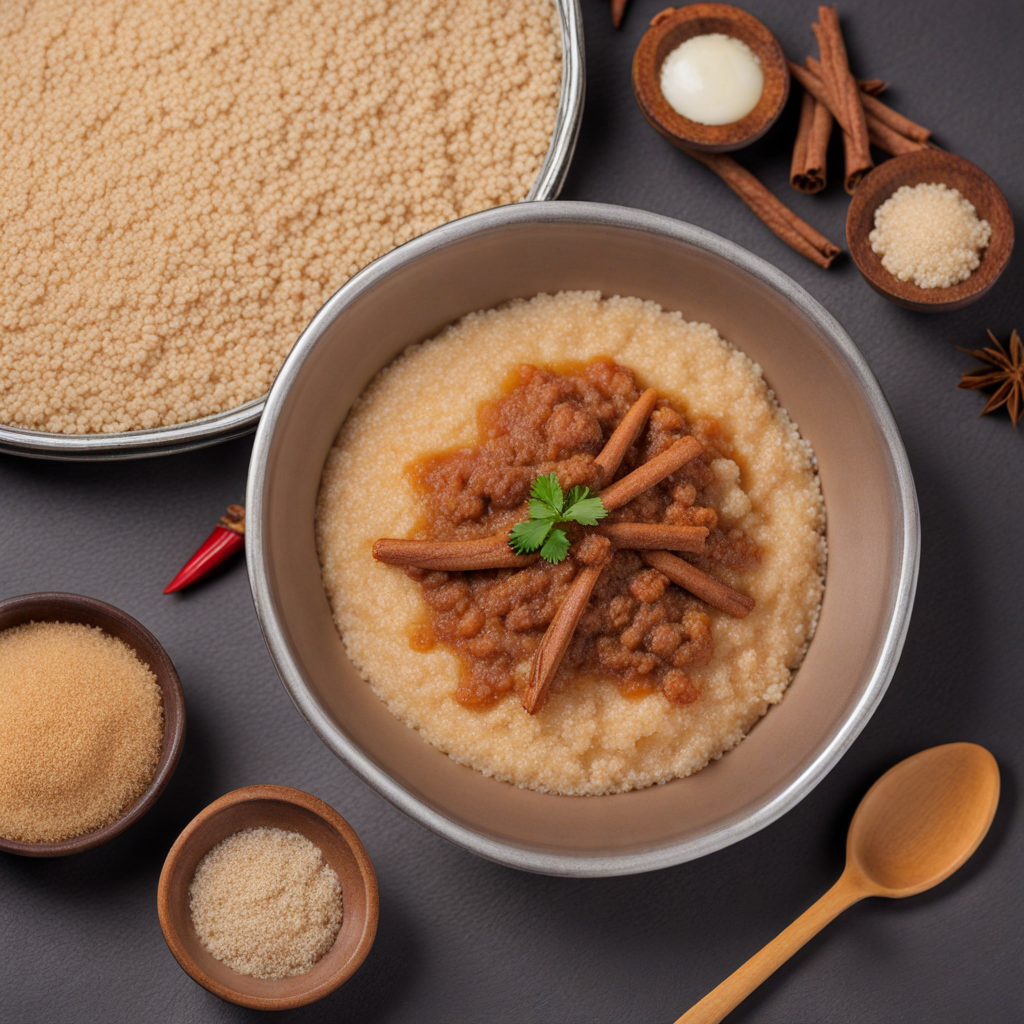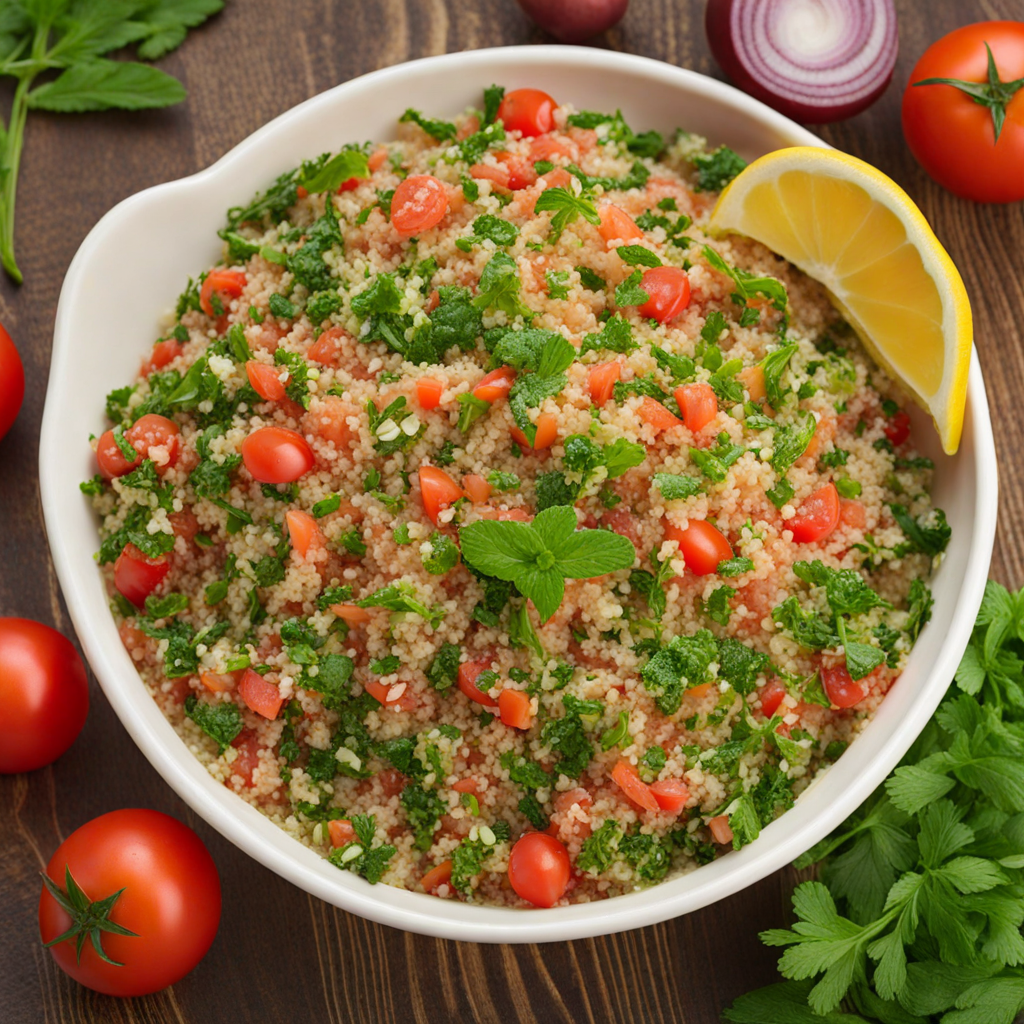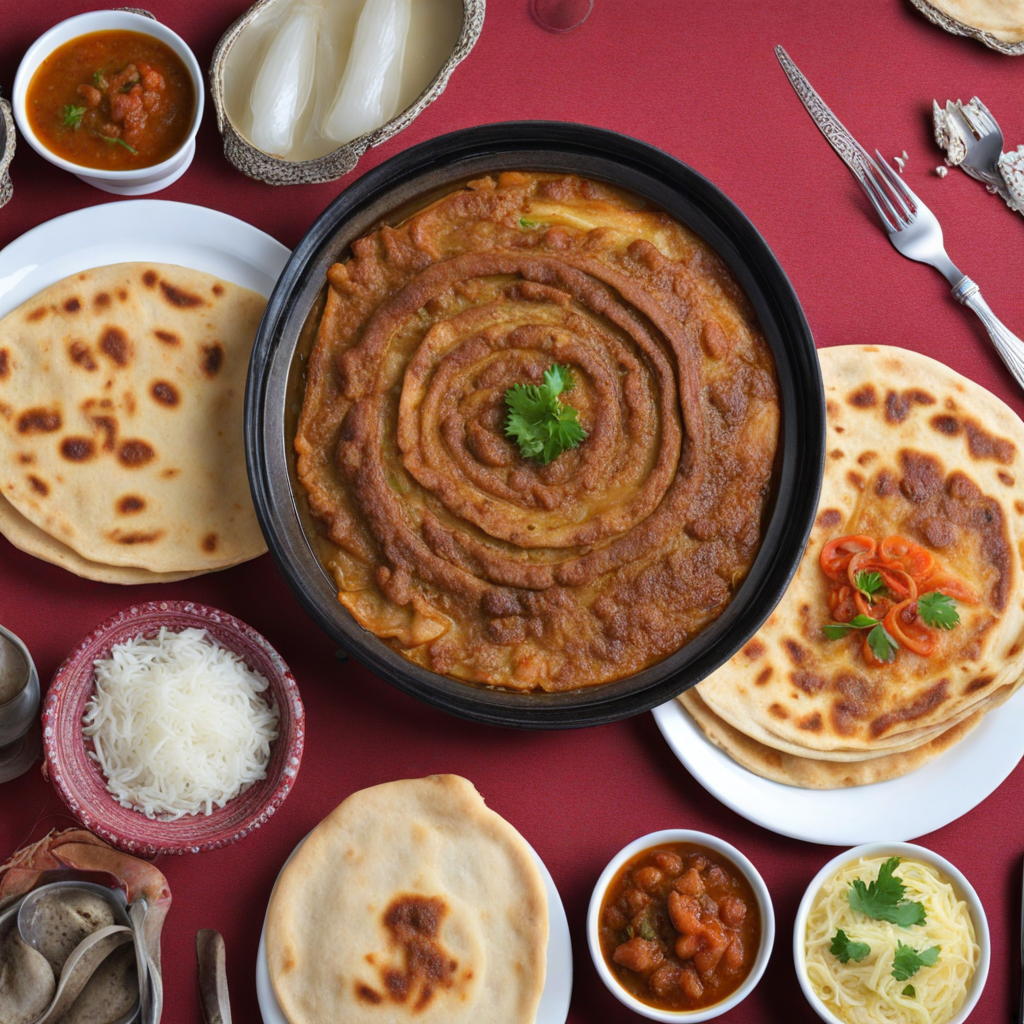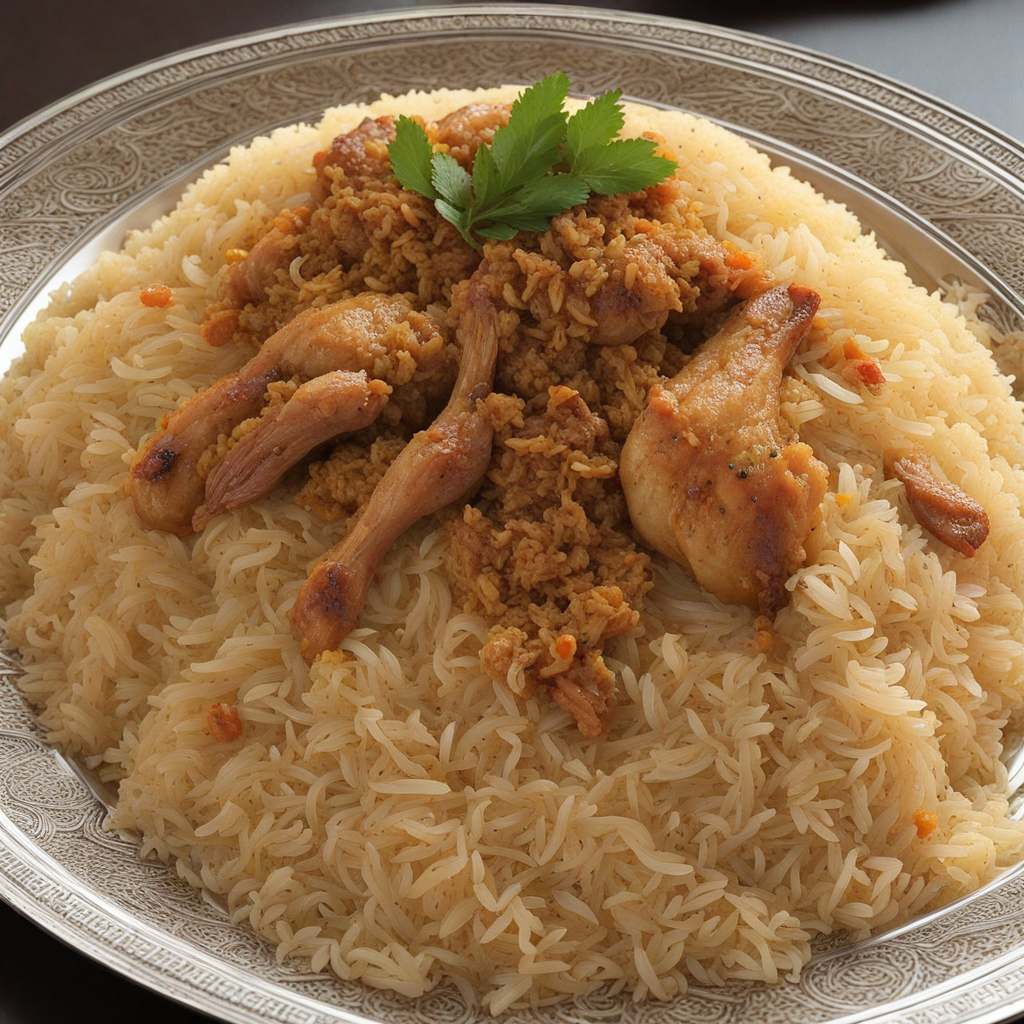Saffron Rice
Saffron Rice, a beloved dish from Bahrain, is a vibrant and aromatic blend that embodies the essence of Middle Eastern cuisine. The rice is typically infused with saffron, a luxurious spice known for its distinct golden hue and unique flavor profile. This aromatic grain is often cooked with a mix of fragrant spices such as cardamom, cinnamon, and bay leaves, creating a warm and inviting aroma that fills the kitchen. The result is a fluffy, golden rice that not only looks stunning on the plate but also tantalizes the taste buds with its rich and exotic flavors. In Bahrain, Saffron Rice is often served as a side dish to accompany various main courses, particularly grilled meats and stews. It pairs beautifully with dishes like Machboos, a spiced rice and meat dish, or even with seafood, enhancing the overall dining experience. The addition of toasted nuts, such as almonds or pine nuts, and dried fruits like raisins or apricots can elevate the dish further, adding texture and a hint of sweetness that complements the savory notes of the rice. This dish not only showcases the culinary heritage of Bahrain but also highlights the importance of saffron in the region's gastronomy. With each bite, you experience a delightful balance of flavors that transport you to the heart of the Middle East. Saffron Rice is more than just a side dish; it is a celebration of culture, tradition, and the art of cooking, inviting food lovers to explore new tastes and savor the warmth of Bahraini hospitality.
How It Became This Dish
The Rich History of أرز بالزعفران: Saffron Rice from Bahrain #### Origins and Historical Background The culinary heritage of Bahrain is a rich tapestry woven from its strategic location at the crossroads of trade routes, its multicultural populace, and its bounty from the sea and land. Among the many dishes that exemplify this heritage, أرز بالزعفران (Arz Bil Za’faran), or saffron rice, holds a special place. This dish is not only a staple on Bahraini tables but also a symbol of the nation’s historical and cultural identity. The origins of saffron rice can be traced back to the ancient civilizations of the Middle East. Saffron, derived from the flower of *Crocus sativus*, has been cherished since antiquity for its vivid color, distinctive flavor, and medicinal properties. Historical records suggest that saffron was used as far back as 2000 BCE, with references found in ancient texts from Persia and the Mediterranean. The spice made its way to the Arabian Peninsula through trade, where it quickly became a sought-after ingredient. Bahrain, known for its pearl diving and trading activities, became a melting pot of cultures, where diverse culinary practices merged. The introduction of saffron into Bahraini cuisine can be attributed to these interactions, particularly with Persian and Indian traders who frequented the islands. Over time, saffron rice became a beloved dish, often associated with celebrations, feasts, and communal gatherings. #### Cultural Significance In Bahraini culture, food is more than sustenance; it is a means of connecting with family and friends, as well as a way to honor tradition. أرز بالزعفران is often prepared during significant events such as weddings, Eid celebrations, and family gatherings. The dish is not merely a recipe; it embodies the spirit of hospitality and the joy of communal dining in Bahraini society. Saffron rice is typically served with a variety of side dishes, including grilled meats, stews, and vegetables. Its vibrant yellow hue symbolizes prosperity and happiness, making it a fitting centerpiece for festive occasions. In this light, the dish transcends mere nourishment; it serves as a symbol of celebration and togetherness within Bahraini culture. Traditionally, saffron rice is cooked with a blend of spices, including cardamom, cinnamon, and cloves, further enriching its flavor profile. The preparation of this dish often involves a ritualistic aspect, with families gathering to cook together, share stories, and reinforce familial bonds. This practice highlights the communal aspect of Bahraini culture, where food is a vehicle for connection and joy. #### Development Over Time As the years progressed, the preparation and presentation of أرز بالزعفران evolved while remaining rooted in its traditional origins. In the early 20th century, with the influence of globalization and the influx of different cultures, Bahraini cuisine began to incorporate new techniques and ingredients. The availability of saffron and other spices became more widespread due to improved trade routes and transportation, allowing for more experimentation in cooking. In contemporary Bahraini society, saffron rice continues to be a beloved dish, with variations emerging across households. Some families may prepare it with chicken or lamb, while others might opt for a vegetarian version, incorporating seasonal vegetables. The versatility of أرز بالزعفران allows it to adapt to different palates and preferences while maintaining its essential character. The rise of the culinary tourism sector in Bahrain has also played a role in the evolution of saffron rice. As chefs and food enthusiasts seek to showcase authentic Bahraini cuisine, traditional dishes have gained recognition on international platforms. Restaurants now offer saffron rice as part of their menus, often presenting it with a modern twist, such as fusion dishes that incorporate local seafood or international flavors. Social media has further contributed to the popularization of أرز بالزعفران. Food bloggers and influencers share recipes, cooking tips, and stunning photographs of the dish, inspiring a new generation to embrace traditional Bahraini cuisine. This digital age has facilitated a revival of interest in saffron rice, making it a symbol of national pride and culinary heritage. #### The Recipe: A Taste of Tradition The classic preparation of أرز بالزعفران involves several key steps that highlight its simplicity and richness. The dish typically begins with rinsing basmati rice to remove excess starch, ensuring fluffy grains upon cooking. The saffron threads are steeped in warm water or broth, allowing their vibrant color and flavor to infuse the dish. Onions are sautéed until golden brown, followed by the addition of spices, which are gently toasted to release their aromatic oils. The rinsed rice is then added, along with the saffron infusion and stock, creating a fragrant and colorful base. The dish is simmered until the rice absorbs the liquid and becomes tender, resulting in a visually stunning and flavorful accompaniment to various main dishes. Traditionally, saffron rice is served in a large communal dish, allowing diners to help themselves, reinforcing the notion of togetherness and sharing. This presentation style embodies the heart of Bahraini hospitality, where food is a communal experience meant to be enjoyed together. #### Conclusion أرز بالزعفران is more than just a dish; it is a reflection of Bahrain’s rich history, cultural significance, and evolving culinary landscape. From its ancient roots in the spice trade to its modern-day adaptations, saffron rice continues to be a cherished element of Bahraini identity. As families gather to celebrate life’s milestones over a plate of this vibrant dish, they carry forward the traditions and stories that have shaped their culinary heritage. In the global tapestry of cuisine, أرز بالزعفران stands as a proud testament to Bahrain’s history, a dish that invites everyone to savor not just its flavors, but the cultural narratives embedded within each grain. As the world becomes increasingly interconnected, the legacy of saffron rice will continue to flourish, linking generations and cultures through the simple act of sharing a meal.
You may like
Discover local flavors from Bahrain


